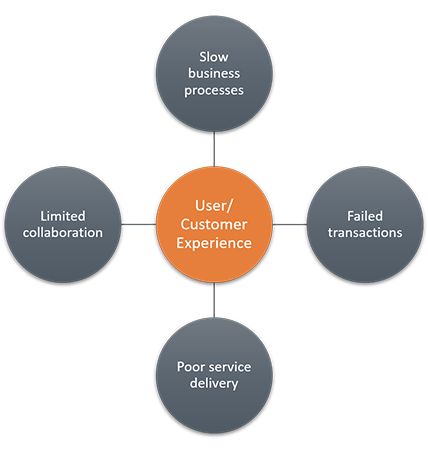
Today’s economy is more technology-driven than ever before. Enterprises that are not yet embracing the digital transformation of their industry will be quickly left in the dust. This transformation is about the digitization of business models, and digital business models are driven by applications. Business-critical applications enable and support many aspects of your day at work. Ultimately, application optimization and management impact productivity, revenue, customer satisfaction, and more.

Application Performance Importance
It’s now critically important for network teams to ensure that the network is optimized in order to support and optimize the performance of the applications that are traversing that network. Your business is heavily reliant on applications performing at its best. All application transactions traverse the network, and network health and performance can influence application performance in multiple ways.
- Network infrastructure health can affect application connectivity and performance
- Network traffic patterns can introduce inefficiencies that add latency to applications
- Network traffic volume creates bottlenecks, packet drops, and jitter that degrade applications
Why You Should be Optimizing Your Application’s Performance

Applications can, very simply, make or break an enterprise. Poor network performance can slow or completely knock out critical business processes. An application outage can cost a business more than sixty thousand dollars per hour. An application that runs poorly will also severely impact revenue and customer satisfaction. Collaborative tools can be rendered basically useless due to poor video and voice quality, which most businesses are heavily relying on now more than ever.
Finding the Perfect NetOps Solution
A network analytics solution must combine application context with network infrastructure metrics and traffic. NetOps and DevOps teams have tools to manage and measure application performance. Due to the growing complexity and demands of the network, organizations are already struggling to keep up. In fact, according to a recent Cisco report, around 73% of organizations are struggling to maintain the status quo rather than future-proofing their networks. Without being able to future-proof the network, organizations lean heavily on legacy tools that do not give clear visibility into the network, especially around application traffic. In order for these teams to be successful, there are three basic functions that these solutions should address.
Application Visibility
Application Visibility Network traffic data holds the key to application visibility. Network performance management tools must be able to read and analyze data from network flow record technology. The key is to find ways to collect this data across a network to gain end-to-end visibility into application traffic. This visibility should extend from the data center to a corporate LAN and WAN. It should also include visibility into the public cloud.
Network Optimization
AIOps-driven technology can connect insights with recommended actions. Machine learning, big data, and predictive analytics technology can reveal how the network is impacting application performance and how changes can resolve potential problems. Automated capacity planning is a popular use case for AIOps-driven NPM technology. These solutions can provide clear visualization into potential capacity issues that will impact application performance.
Application Performance Assessment
Application performance assessment requires deep insight into multiple classes of network data. Network flows with IPFIX/NetFlow v9 extensions are helpful to application performance assessment because they can carry reports specific to application performance, depending on the extension fields supported by network infrastructure vendors.
The Rise of AIOps and Network Analytics
With application performance now paramount, legacy approaches to network operations no longer support your mission. You cannot optimize application performance simply by tracking packet loss, latency, and jitter, and application teams cannot rely on their application performance management tools alone. The network team must empower itself with deep application intelligence to support digitization.With LiveAction, network management teams are able to improve application performance, accelerate troubleshooting, manage their network readiness, deliver major IT initiatives, and perform advanced reporting and analysis. Check out our latest webinar, Troubleshooting Application Performance to learn more.



